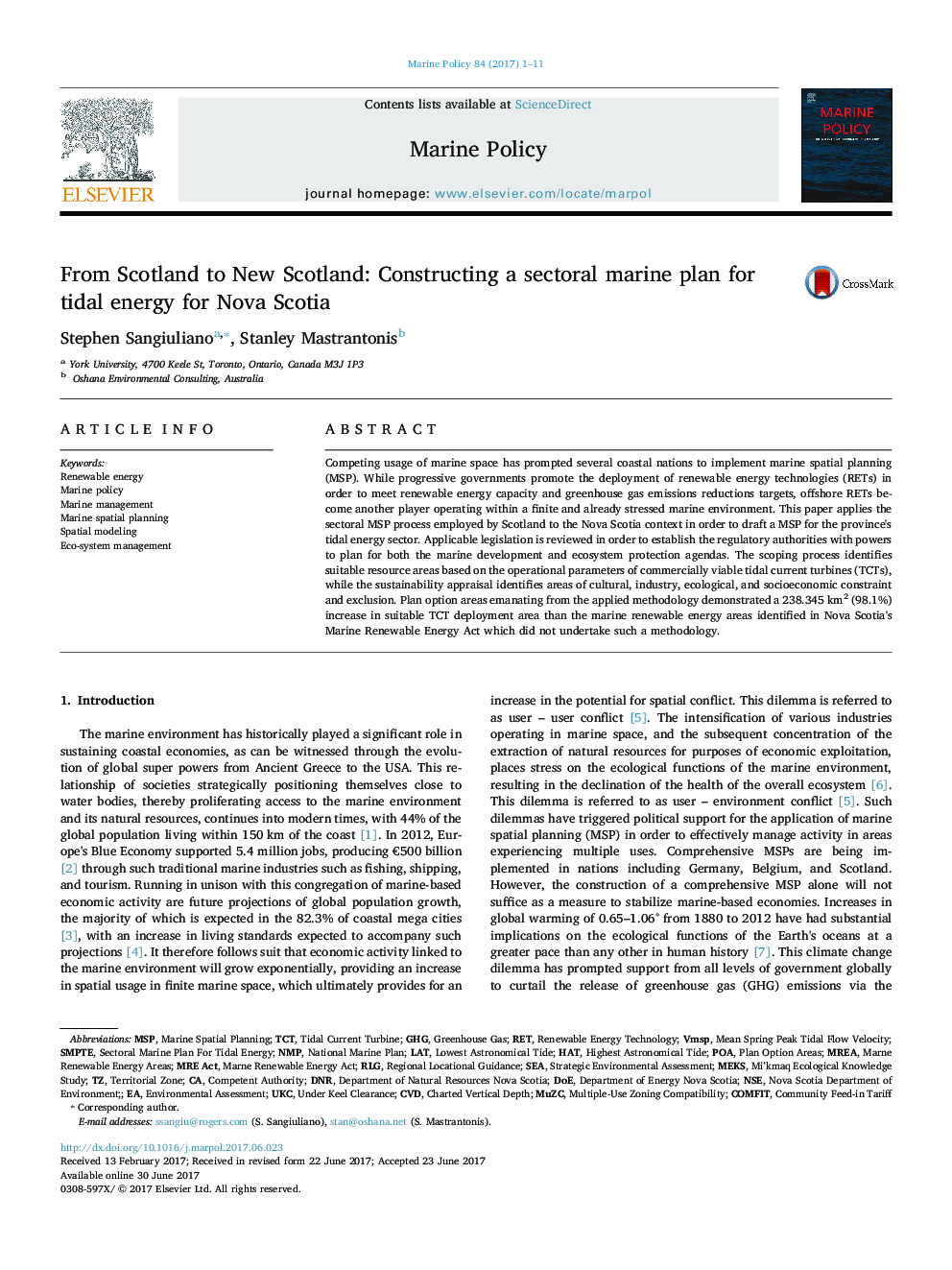| کد مقاله | کد نشریه | سال انتشار | مقاله انگلیسی | نسخه تمام متن |
|---|---|---|---|---|
| 5117962 | 1485495 | 2017 | 11 صفحه PDF | دانلود رایگان |
- Plan option areas for suitable deployment of tidal current turbines measure 242.966Â km2.
- The five identified plan option areas can accommodate 253Â MW of installed tidal turbine capacity.
- New legislation should be written that provides for provincial regulatory authority.
- A federal marine plan which provides policies for sectoral plans should be established.
- Greater data analysis be undertaken and mapped to enhance spatial decision making procedures.
Competing usage of marine space has prompted several coastal nations to implement marine spatial planning (MSP). While progressive governments promote the deployment of renewable energy technologies (RETs) in order to meet renewable energy capacity and greenhouse gas emissions reductions targets, offshore RETs become another player operating within a finite and already stressed marine environment. This paper applies the sectoral MSP process employed by Scotland to the Nova Scotia context in order to draft a MSP for the province's tidal energy sector. Applicable legislation is reviewed in order to establish the regulatory authorities with powers to plan for both the marine development and ecosystem protection agendas. The scoping process identifies suitable resource areas based on the operational parameters of commercially viable tidal current turbines (TCTs), while the sustainability appraisal identifies areas of cultural, industry, ecological, and socioeconomic constraint and exclusion. Plan option areas emanating from the applied methodology demonstrated a 238.345Â km2 (98.1%) increase in suitable TCT deployment area than the marine renewable energy areas identified in Nova Scotia's Marine Renewable Energy Act which did not undertake such a methodology.
Journal: Marine Policy - Volume 84, October 2017, Pages 1-11
